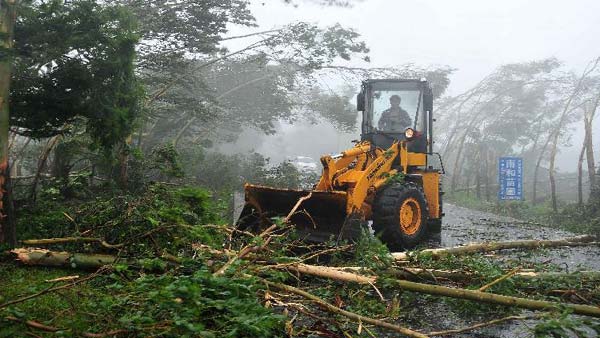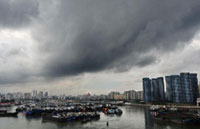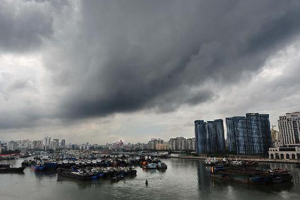 |
|
A municipal worker drives a bulldozer to clear broken trees off the road in Wenchang, south China's island of Hainan Province, July 18, 2014.[Photo/Xinhua] |
The man, a resident of Wengtian Town, was hit by debris after his house collapsed, Liu Chunmei, mayor of Wenchang, told Xinhua.
Isolated town fears more casualties
Rammasun, which might be the strongest typhoon to hit Hainan in 40 years, landed in Wengtian at around 3:30 p.m., packing winds of up to 216 km per hour and bringing torrential rain.
It is moving northwestward.
 |
Xu Quanzhun, head officer of the public security branch in the town, told Xinhua that the number of casualties might rise, as the branch received dozens of phone calls from locals to report injuries before the power was cut off.
However, all the roads in the town are either flooded or blocked, and the branch office is also hemmed in by water, so it is hard for people to reach the police.
"Some rescuers are on their way to places in need of help, but I have lost contact with them too," said Xu.
The Wenchang public security frontier detachment has sent 60 officers to Wengtian, but it is not sure when they will arrive.
Xinhua reporters in Wengtian saw torrential rain flooding farmland and roads covered by broken trees as the typhoon swept along.
Vehicles, trapped on a main road of the town, are shaking in the wind and people are finding it difficult to stand outside.
Maintenance workers are cleaning the main road in the town with a bulldozer.
Evacuation continues
As of 1 p.m. on Friday, more than 210,000 residents in Hainan have been evacuated, said the Hainan provincial command center for flood prevention, drought control and typhoon response.
The local Red Cross Society is delivering tents and rice to the landfall region, and the Red Cross Society of China is also allocating disaster relief goods to the province.
The central primary school of Wencheng Town is now home to more than 200 evacuated residents. Xinhua reporters saw local government staff distributing bottled drinking water, instant noodles and bread to the residents.
A staff member told Xinhua they prepared enough food and clothing and are ready to receive more evacuees.
Traffic suspended
Hainan has closed all its airports, train stations, bus stations and ports. Its ferry, rail and bus services have also been suspended.
More than 6,900 passengers have been affected after 184 flights were canceled.
The provincial tourism bureau has issued an urgent circular, requiring all tourism resorts to close and tour bus companies to suspend operation from 1 p.m. on Friday to 4 p.m. on Saturday.
In the neighboring province of Guangdong, highways are also closed and vessels have been called back to harbor in ports.
In the Guangxi Zhuang Autonomous Region, which is expected to receive the typhoon on Friday night, 36 trains have been canceled from Thursday to Sunday.
High-speed train services between the regional capital Nanning and coastal cities have also been suspended, according to Nanning's railway bureau.
Red alert
Jiang Dingzhi, Hainan's governor has required local governments to give priority to people's safety in combating Rammasun.
In addition, governments should prepare for possible geographical disasters such as landslides, which often come after a strong typhoon, he said.
Wu Hongyu, chief weatherman of the climate center of neighboring Guangdong Province, said Rammasun is likely to replace Sally, which wreaked havoc in 1996, as the strongest typhoon to hit the province.
Guangdong provincial authorities have launched the highest level of emergency response. Construction projects, schools and businesses have been suspended in the cities of Maoming and neighboring Zhanjiang.
 |
 |
